Blog
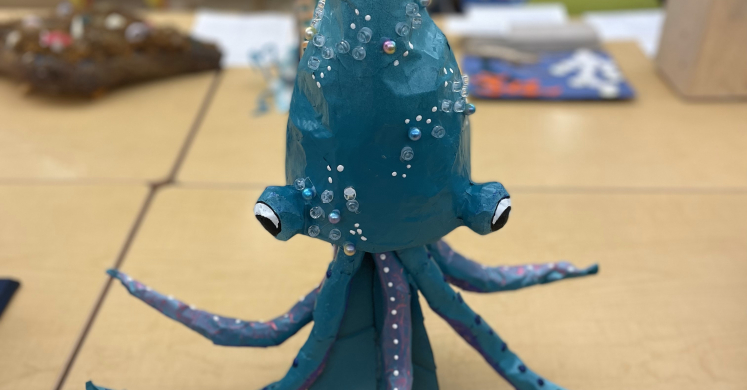
Welcome to the Fairchild Challenge 5: Sea Creature Creations Winners Online Gallery!
As our oceans change, marine life will be faced with new challenges like temperature fluctuation, ocean acidification, and the depletion of certain resources like food or shelter, all of which, have different impacts on sea creatures’ ability to survive. In Challenge 5: Sea Creature Creations, area high school, middle school, and elementary school students were asked to design and build sculptures that represent what transformations marine life might undergo to better their chances of survival in the future.
Their challenge was to design and create a 3D sculpture of their very own sea creature that they think will be able to best adapt to the oceans evolving conditions! In their design, they were asked to contemplate their sea creature’s physical features, behaviors, and unique characteristics that would give it the upper hand in its environment. They were asked to use their knowledge of real marine adaptations as inspiration and let their imagination run wild as they invent a resilient and innovative sea creature that will withstand environmental change. All projects have been created entirely out of repurposed and recycled materials. We recieved some truly incredible submissions. The eight highest scoring projects will be on display in the Welcome Center Gallery throughout our Summer Show: Under the Sea!
Winners
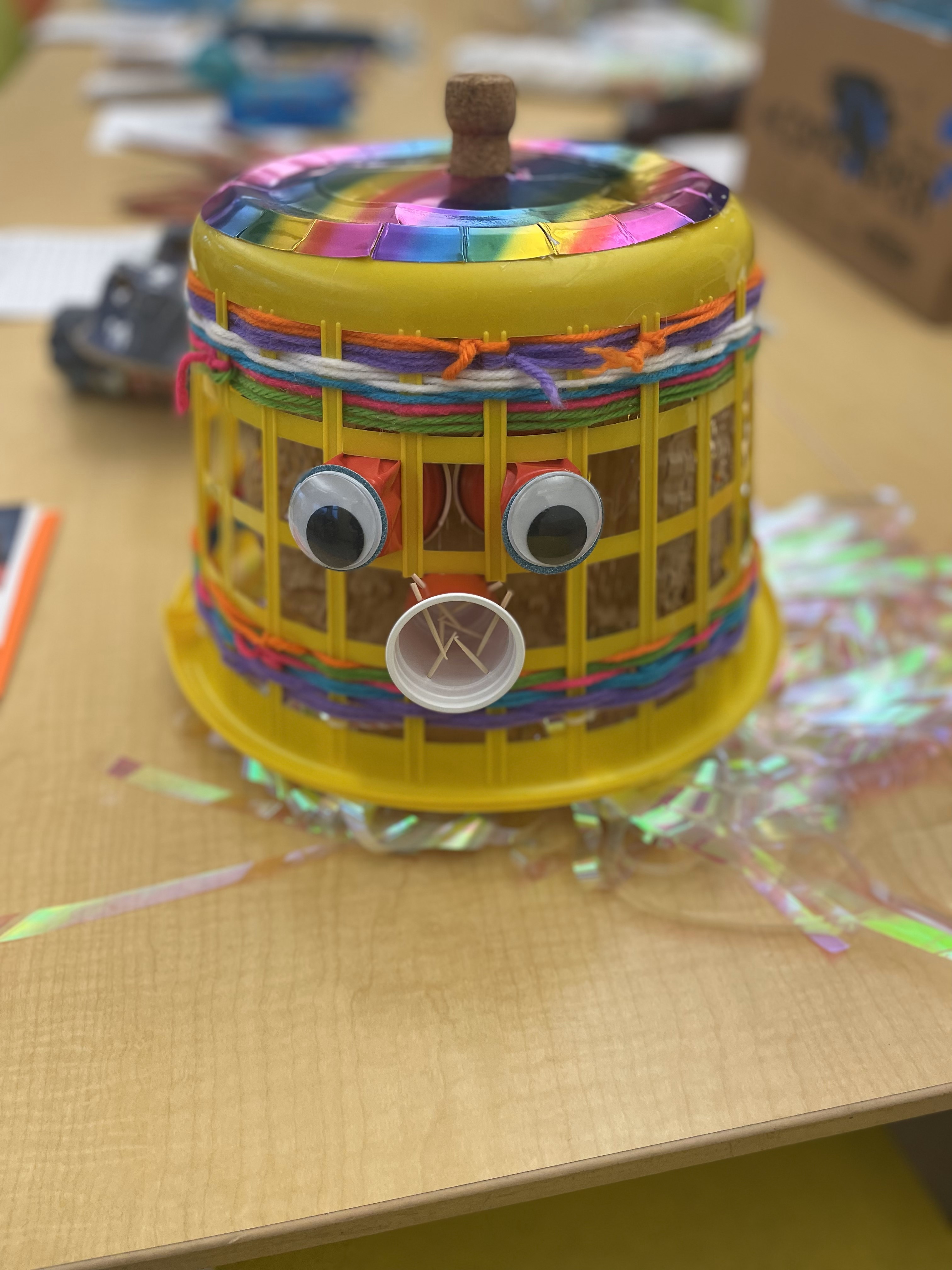
Piper Machen
3rd Grade, Tenth Street Elementary
The design of Piper’s sculpture is inspired by the defense mechanisms of jellyfish, a seahorse’s strong vision, a mantis shrimp’s captivating colors, a turtle’s protective shell, the long teeth of a barracuda, the large mouth of a gulper eel that helps it swallow prey, and a dolphin, which has a blowhole on the top of its head, allowing it to reach air at the surface. Materials used to construct this sculpture include a laundry bin, party tassels, leftover yarn, party plates, corks, and small red cups, brown packaging paper, and toothpicks.
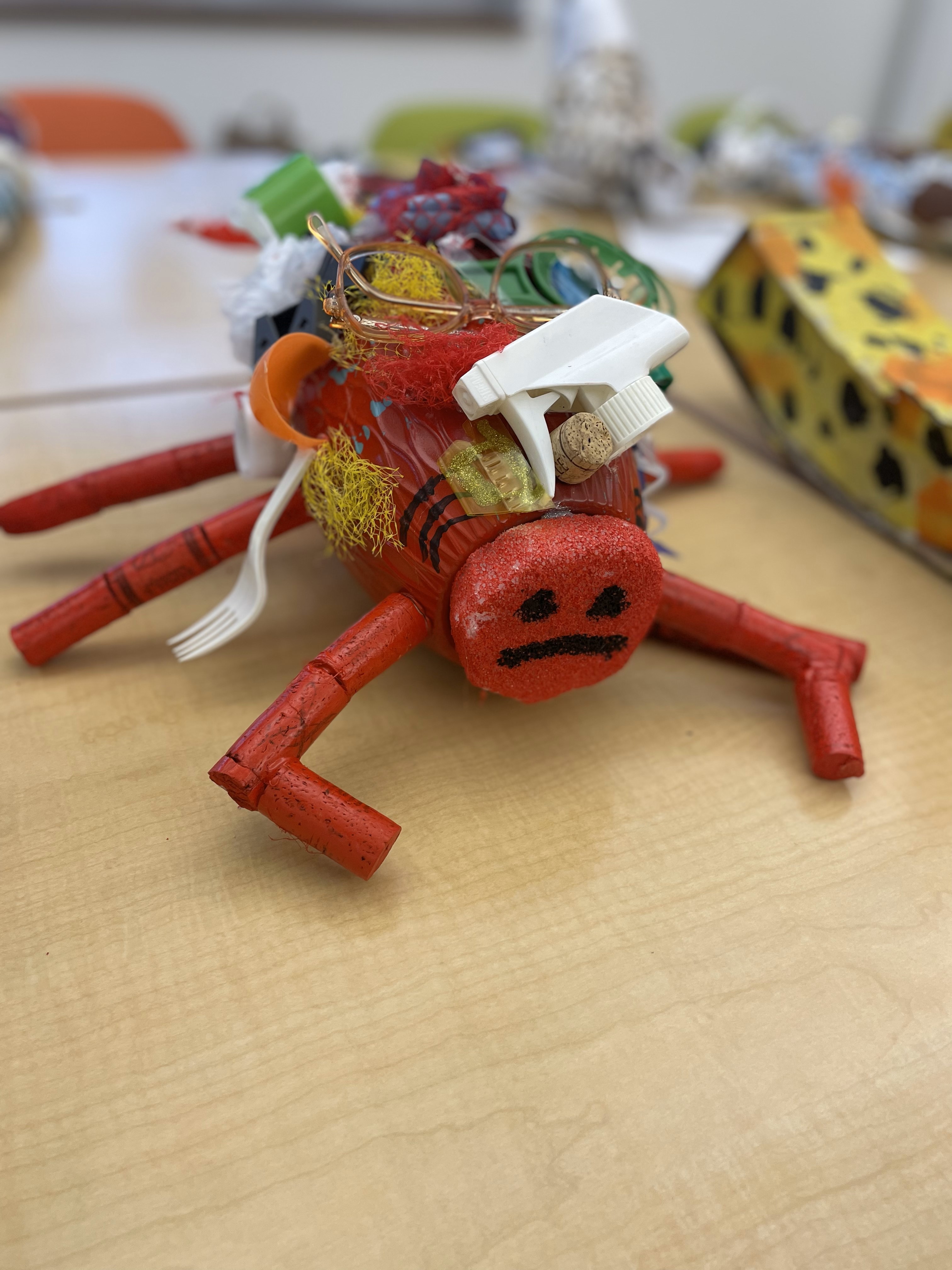
Rosie Moon
6th Grade, Environmental Charter School
The design of Rosie’s sculpture is inspired by the warm-blooded narwhal, which is able to regulate its body temperature as temperatures in the ocean rise and fall, and the long tentacles of an octopus that allow it to move quickly across the ocean floor. Materials used to construct this sculpture include old planters, soda bottles, corks, and random discards.
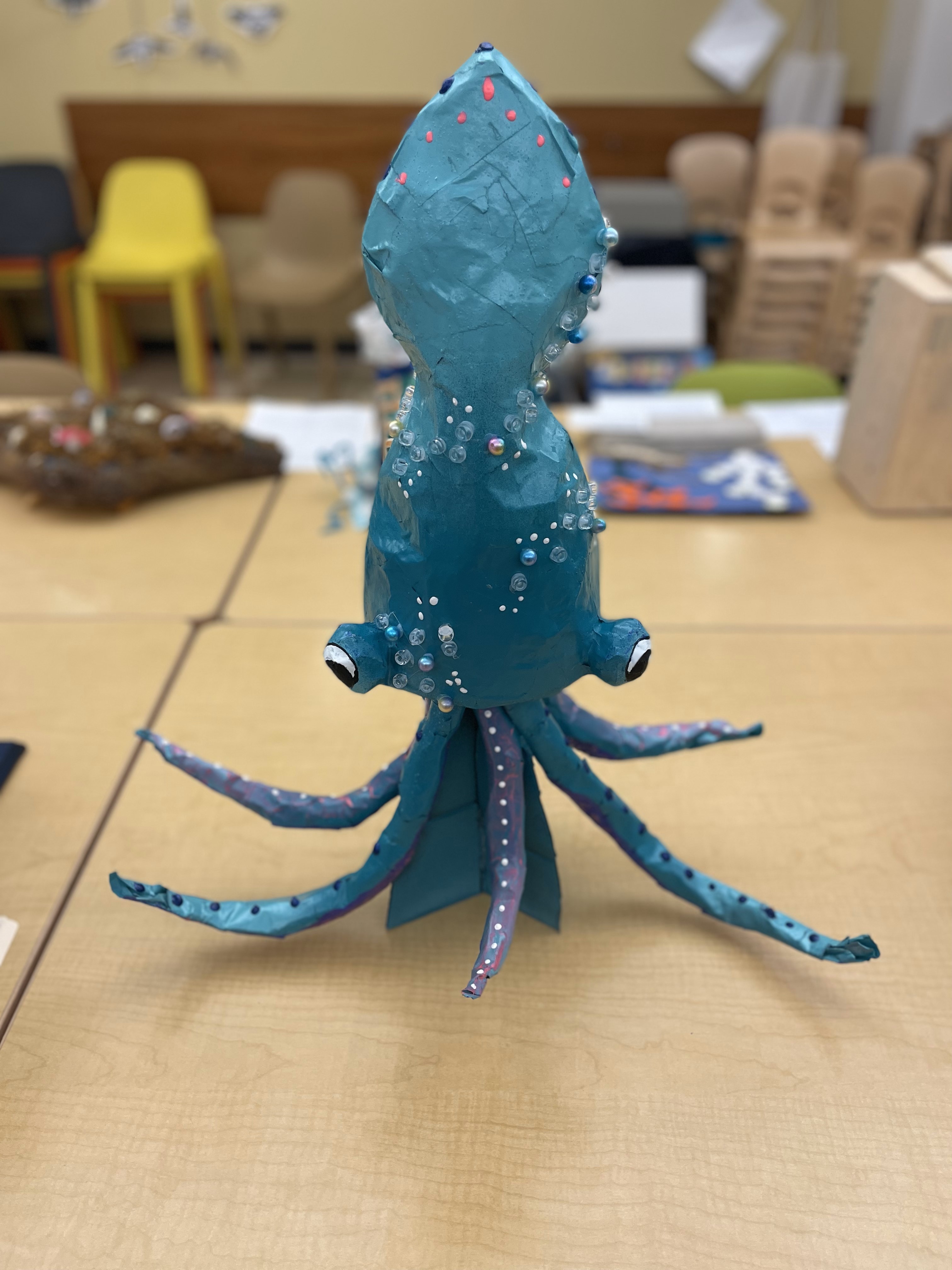
Katelyn McKee, Claire Magness, Mira Ramanathan, Addison Girdwood, Cecelia Crowley, Annelie Gustafsson
12th Grade, Mars Area High School
The design for this sculpture, named “Squink”, is inspired by the Cephalopoda group, specifically, the squid and octopus, focusing specifically on the tentacles, ink production, and ability to fluctuate their metabolic rate. Materials used to construct this sculpture include strips of cardboard, newspaper, found bubble wrap, and leftover beads from Taylor Swift friendship bracelets.
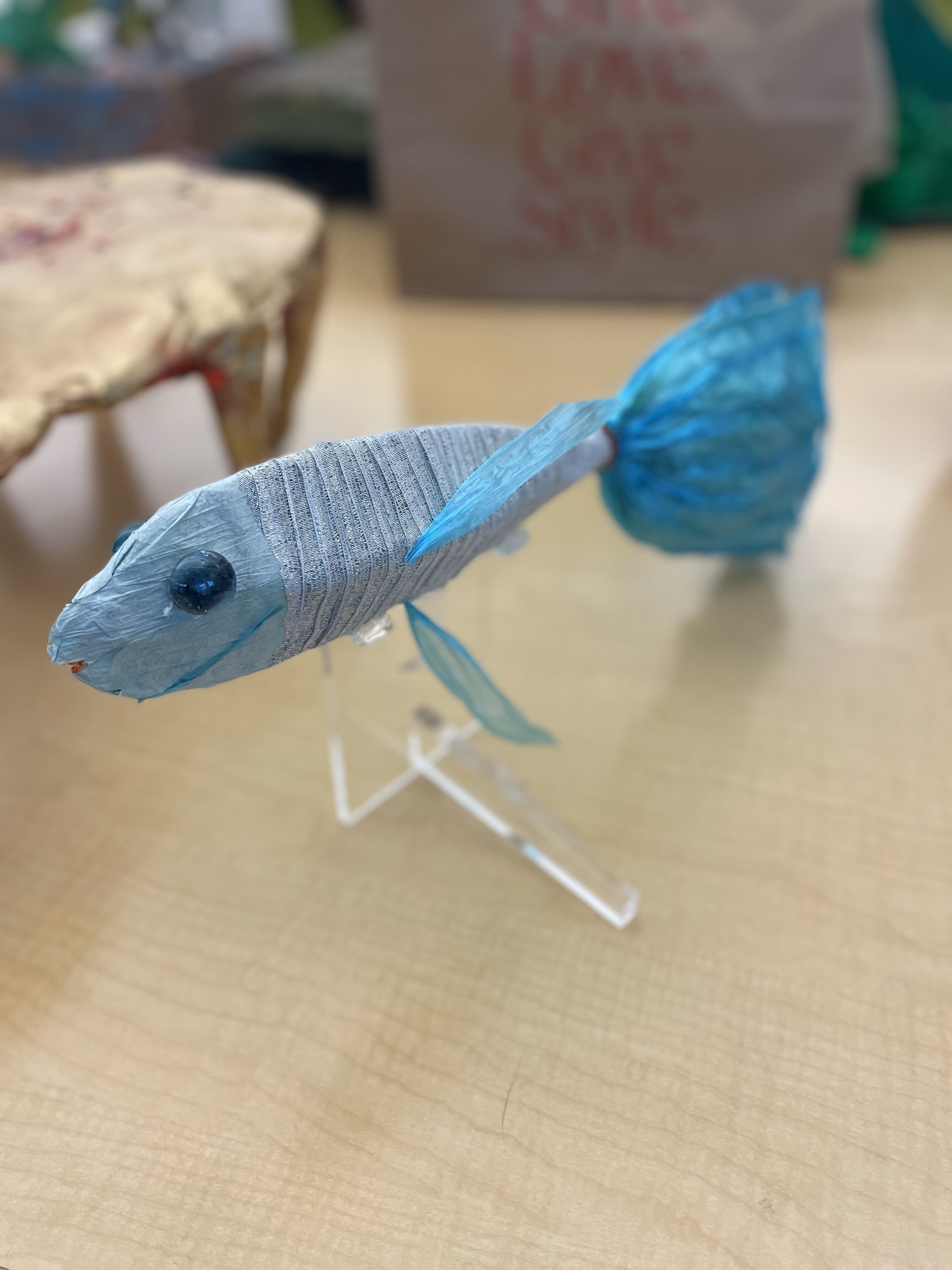
Elsie Ley
8th Grade, Penn-Trafford Middle School
The design for Elsie’s sculptures is inspired by three fish: an opah fish, a trout, and a betta fish. The length of the sculpture is reflective of a trout which allows it to move faster in the water while its reflective skin helps it to blend in with its surroundings. The beta fish-like tail helps it to attract mates, and the opah fish is warm-blooded, allowing it to digest food and react quickly. Materials used to construct this sculpture include board, gum wrappers, painter tape, ribbon, beads, tissue paper, marbles, and watercolor paint.
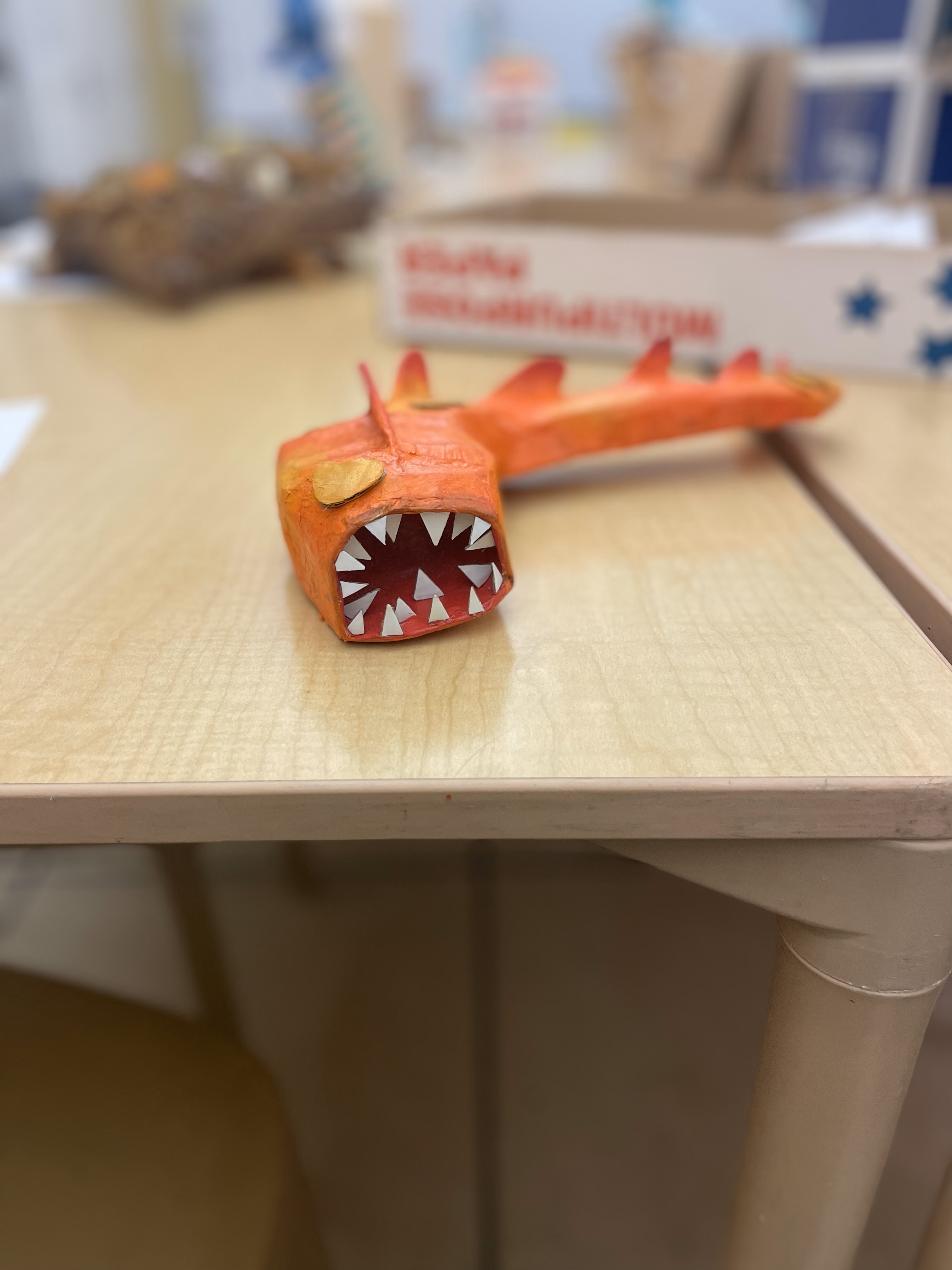
Addison Upshaw
9th Grade, West Mifflin Area High School
The design for Addison’s sculpture is inspired by an eel’s sleek tail and large mouth, the flexibility of a worm, and the razor-sharp teeth of an angler fish. Materials used to construct this sculpture include carboard, orange and white tissue paper from old gift bags, modge podge, and leftover paints.
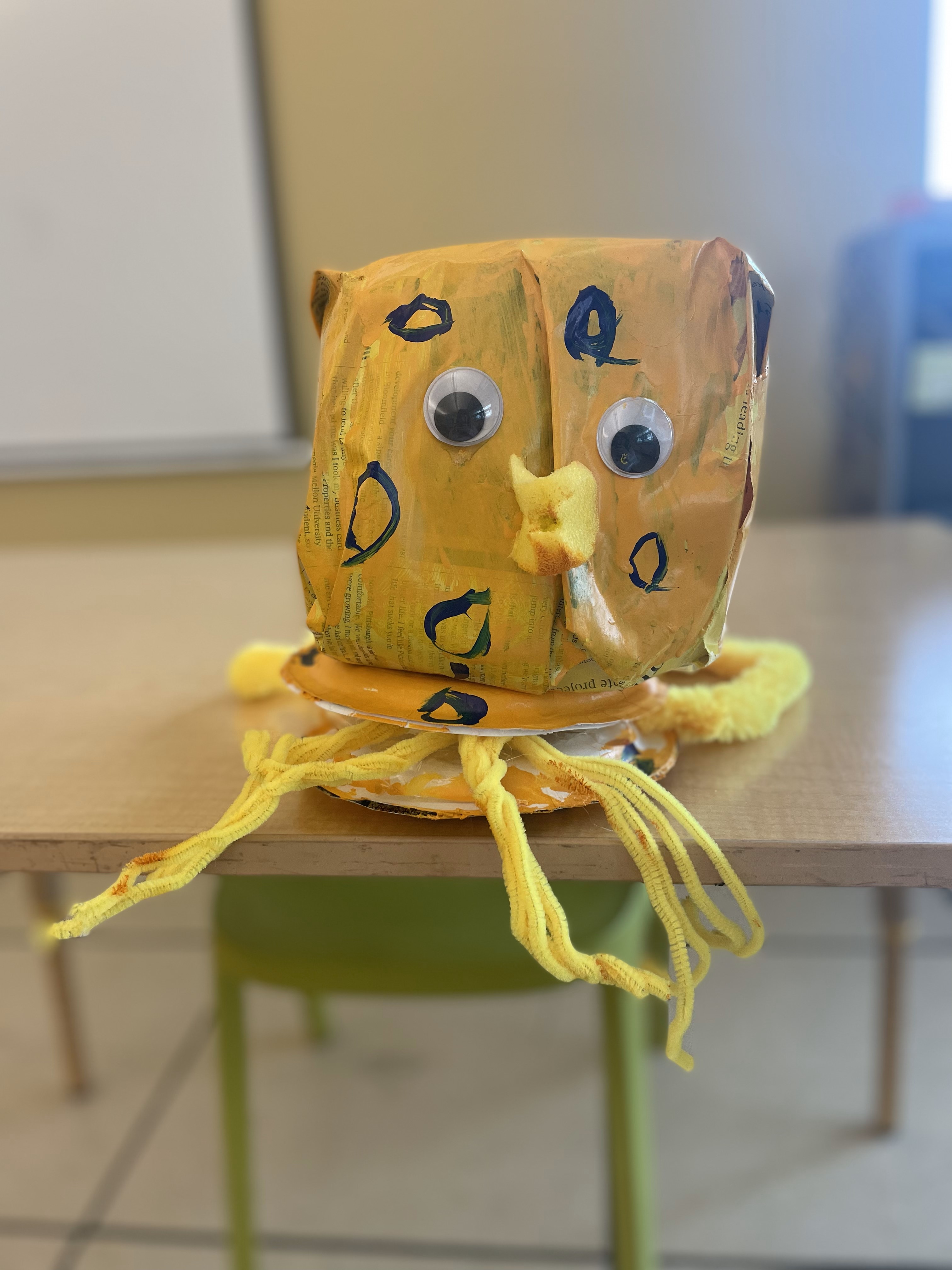
David DelFiandra
7th Grade, Archangel Gabriel Catholic School
The design for David’s sculpture is inspired by the venomous blue ringed octopus. Materials used to construct this sculpture include paper plates, old newspaper, pipe cleaners, spray paint, and googly eyes.
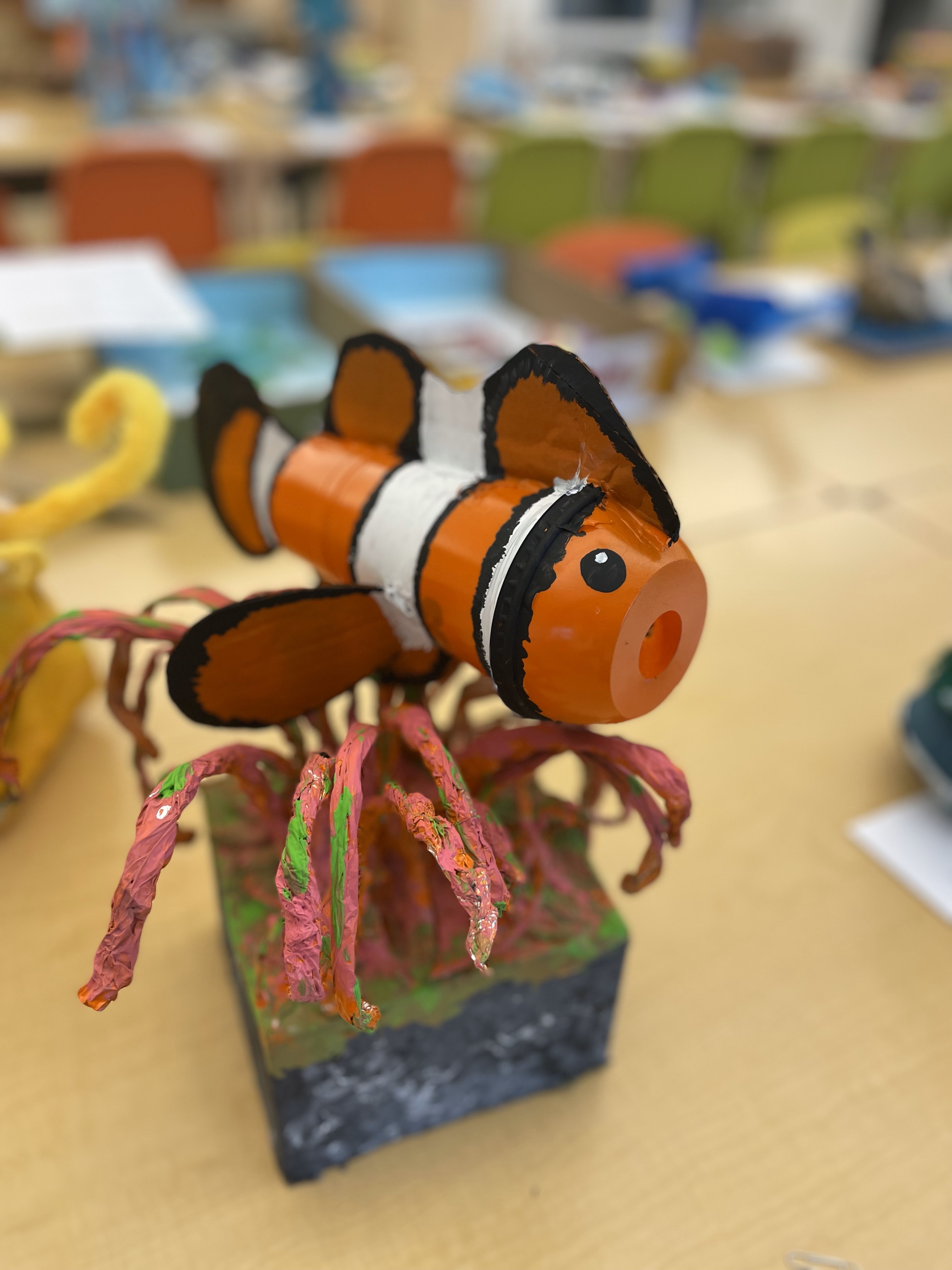
Maeve McGarvey
7th Grade, Archangel Gabriel Catholic School
The design for Maeve’s sculpture is inspired by clownfish, which protect themselves from predators by hiding in anemones. While anemones are known to sting, clownfish have a mucus that covers their whole body, acting as a barrier and preventing them from feeling this sting. Materials used to construct this sculpture include a plastic fountain drink cup, old packing boxes, aluminum foil, and paint.
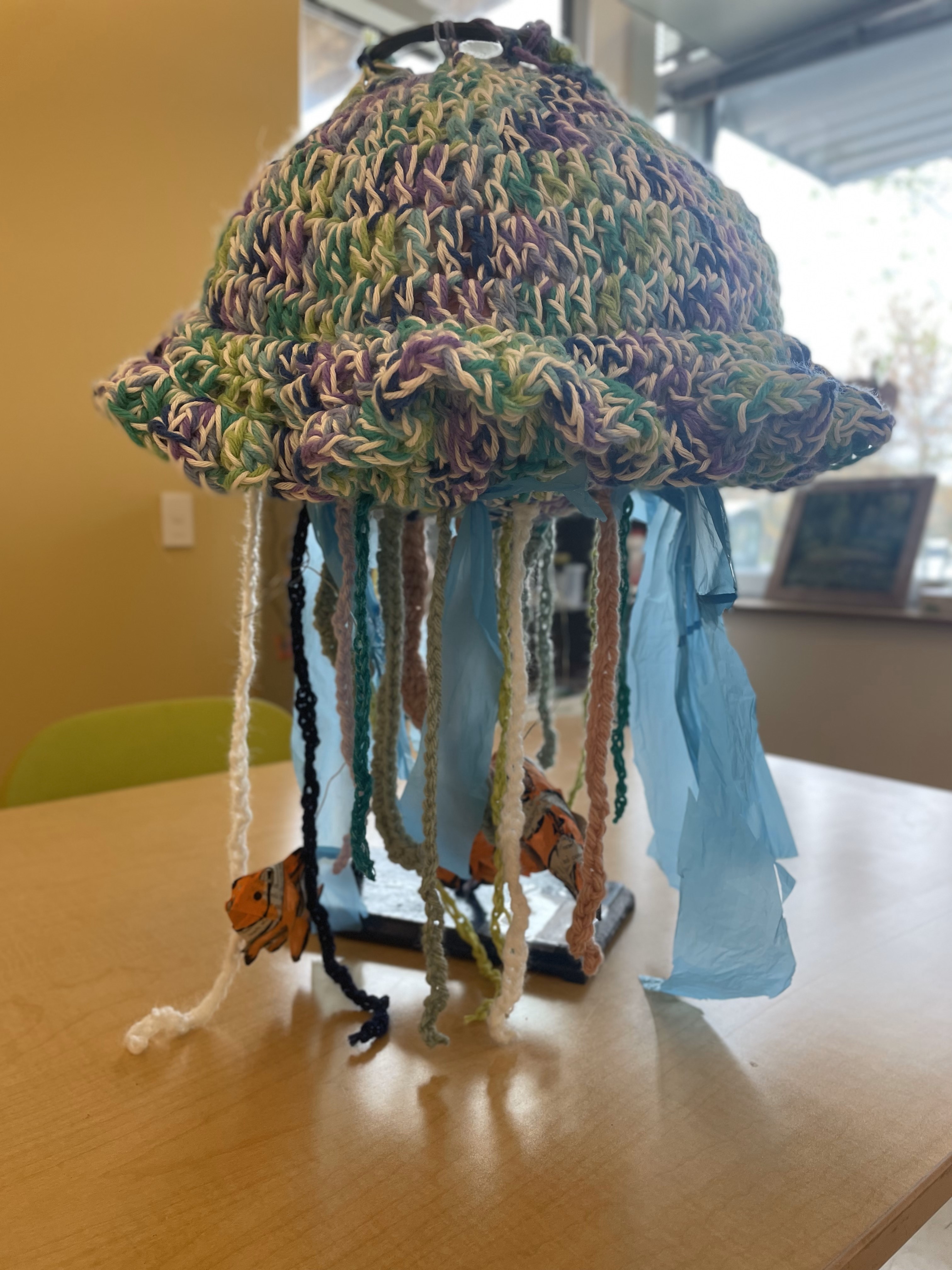
Grace Helbling and Elise Williams
10th Grade, Shaler Area High School
The design for this sculpture, named “Jellemone”, is inspired by the relationship between clownfish and anemone, as well as jellyfish. Clownfish are not impacted by the sting of the anemone, their primary habitat, because of a layer of mucus that covers their whole body. With changing oceans conditions, Jellemone provides a similar habitat to that of an anemone, only, unlike the anemone, jellyfish are mobile, allowing the clownfish to move safely and freely. Materials used to construct this sculpture include leftover yarn, plastic grocery bags, spray paint, old lab ring stand, newspapers, homecoming float wire wrapping, cereal box, and paint.

